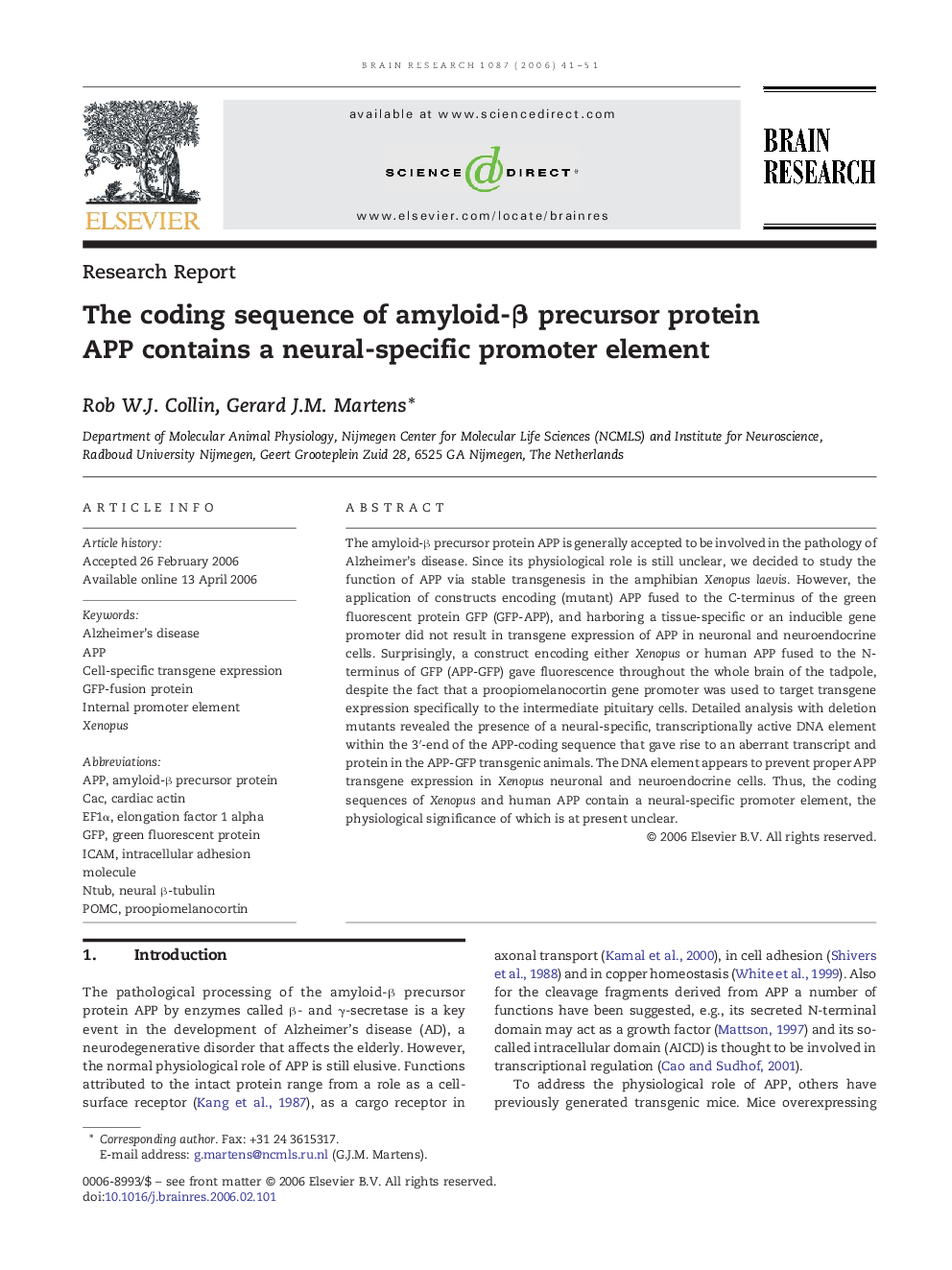| Article ID | Journal | Published Year | Pages | File Type |
|---|---|---|---|---|
| 4332982 | Brain Research | 2006 | 11 Pages |
The amyloid-β precursor protein APP is generally accepted to be involved in the pathology of Alzheimer's disease. Since its physiological role is still unclear, we decided to study the function of APP via stable transgenesis in the amphibian Xenopus laevis. However, the application of constructs encoding (mutant) APP fused to the C-terminus of the green fluorescent protein GFP (GFP-APP), and harboring a tissue-specific or an inducible gene promoter did not result in transgene expression of APP in neuronal and neuroendocrine cells. Surprisingly, a construct encoding either Xenopus or human APP fused to the N-terminus of GFP (APP-GFP) gave fluorescence throughout the whole brain of the tadpole, despite the fact that a proopiomelanocortin gene promoter was used to target transgene expression specifically to the intermediate pituitary cells. Detailed analysis with deletion mutants revealed the presence of a neural-specific, transcriptionally active DNA element within the 3′-end of the APP-coding sequence that gave rise to an aberrant transcript and protein in the APP-GFP transgenic animals. The DNA element appears to prevent proper APP transgene expression in Xenopus neuronal and neuroendocrine cells. Thus, the coding sequences of Xenopus and human APP contain a neural-specific promoter element, the physiological significance of which is at present unclear.
